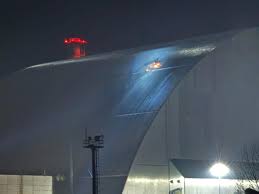Chornobyl NPP has overcome the consequences of the February attack. But enemy drones are flying nearby again
7 March 16:42
The emergency situation at the Chornobyl nuclear power plant has been eliminated after an enemy attack on February 14. This was announced by the Minister of Environmental Protection and Natural Resources of Ukraine Svitlana Hrynchuk, "Komersant Ukrainian" reports.
She recalled that on February 14, at about two in the morning, Russians attacked the Arch of the New Safe Confinement over the destroyed fourth power unit of the Chernobyl nuclear power plant with an explosive warhead. After the fire was extinguished, the filler of the Arch’s containment continued to smolder.
“Today at 12 o’clock this process was stopped. The radiation situation is unchanged and is under constant control. Now our task is to conduct a qualitative analysis of the damage to the Arch and restore its functioning,” the Minister said.
She said that a SES unit would continue to be on duty at the plant and that radiation and thermal imaging monitoring would continue.
The consequences of the drone attack on Chornobyl could have been catastrophic
The drone that attacked the nuclear power plant was equipped with an explosive warhead and was flying at an altitude of 85 meters, which is why it was not detected by radar. This was announced by SNRIU Chairman Oleh Korikov.
As a result of the enemy drone attack, part of the equipment of the new safe confinement at the Chornobyl nuclear power plant was de-energized. According to Oleh Korikov, the lifting equipment was also damaged, and the ventilation systems did not work.

According to the head of the State Agency of Ukraine for Exclusion Zone Management, Hryhoriy Ishchenko, if the drone had exploded 15 meters away from the site of the attack – over the old shelter – the consequences of the attack could have been catastrophic.
No exceedances of control levels of radiation background were recorded at the site on the night of February 14. Instead, the SES hydrometeorological service conducted monitoring throughout Ukraine.
The IAEA recorded the attack, but did not mention Russia
As noted in the mission’s operational report, on the night of February 13-14, at about 01:50, the IAEA team at the Chornobyl site heard an explosion from the new safe confinement protecting the remains of the former Chornobyl NPP’s reactor 4, which caused a fire. The team was told that the UAV had hit the roof of the confinement.
“Obviously, this was a serious incident in terms of nuclear safety, although it could have been much worse. As I have said repeatedly during this devastating war, attacks on nuclear facilities should never happen,” IAEA Director General Rafael Grossi said later.
And on March 5, the IAEA team at the Chornobyl NPP in its report drew attention to numerous air overflights over the past week.









